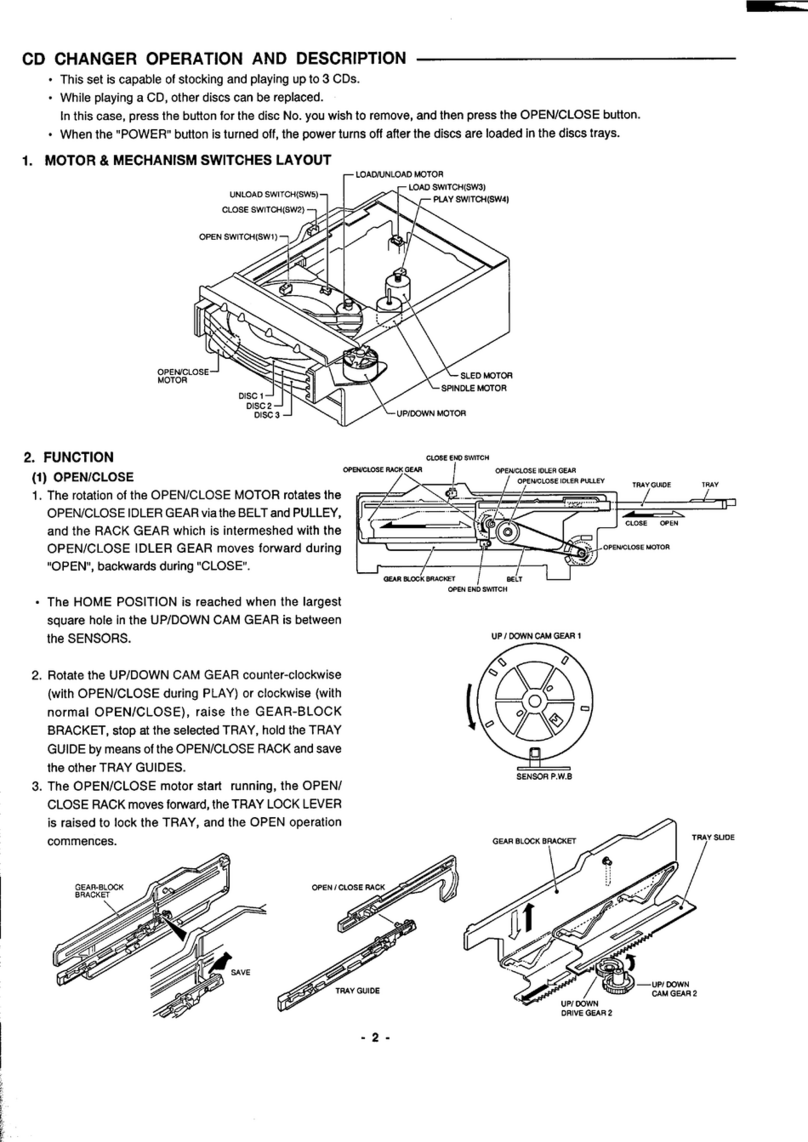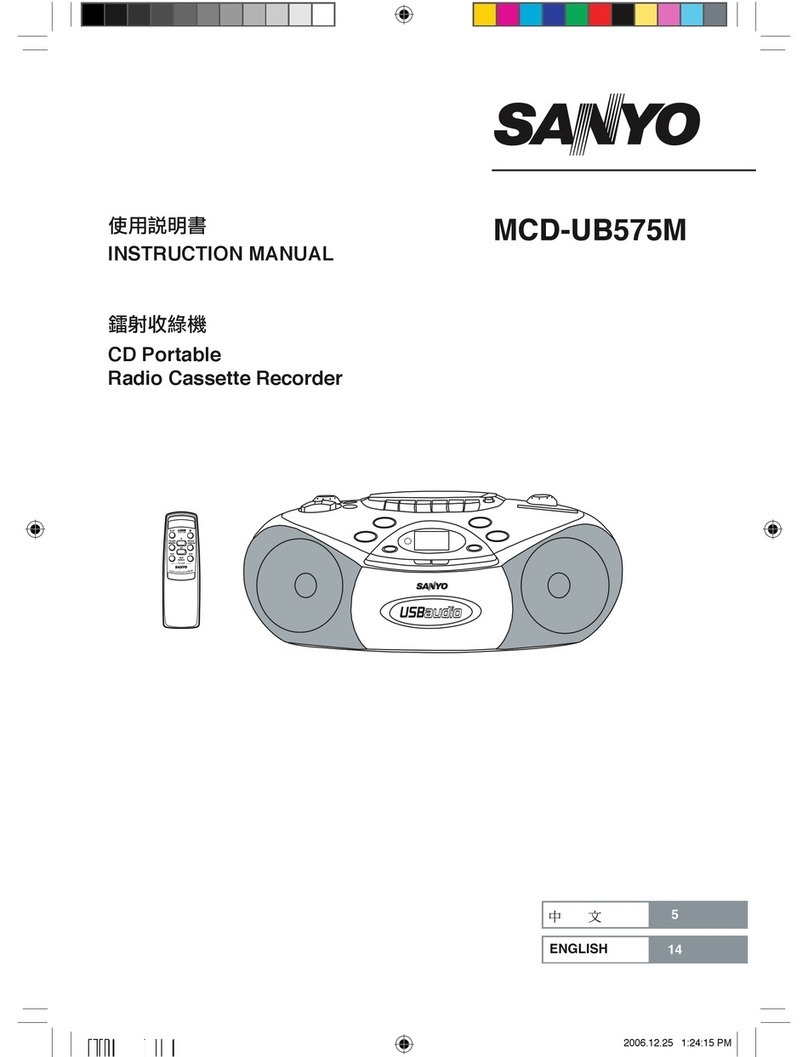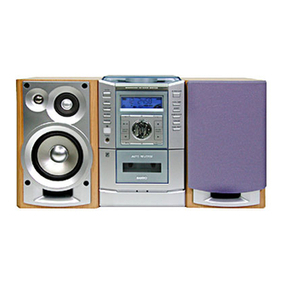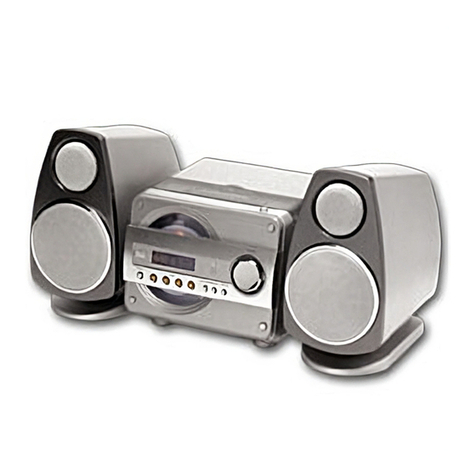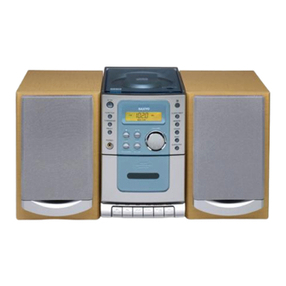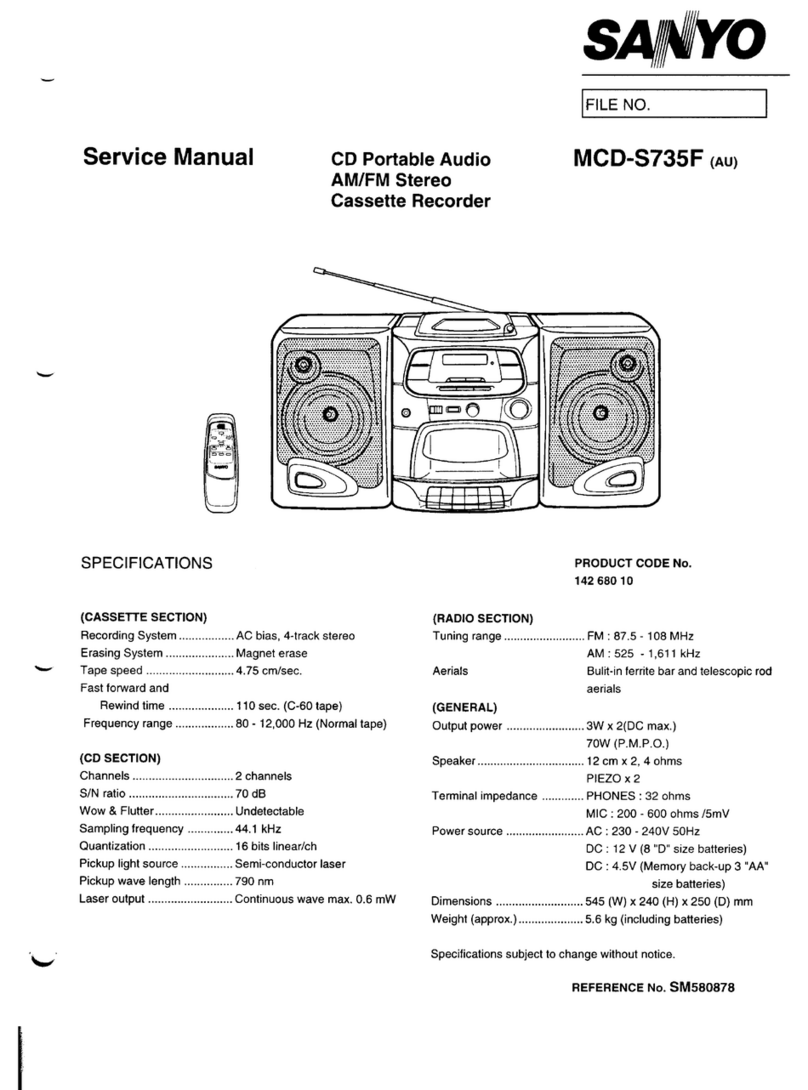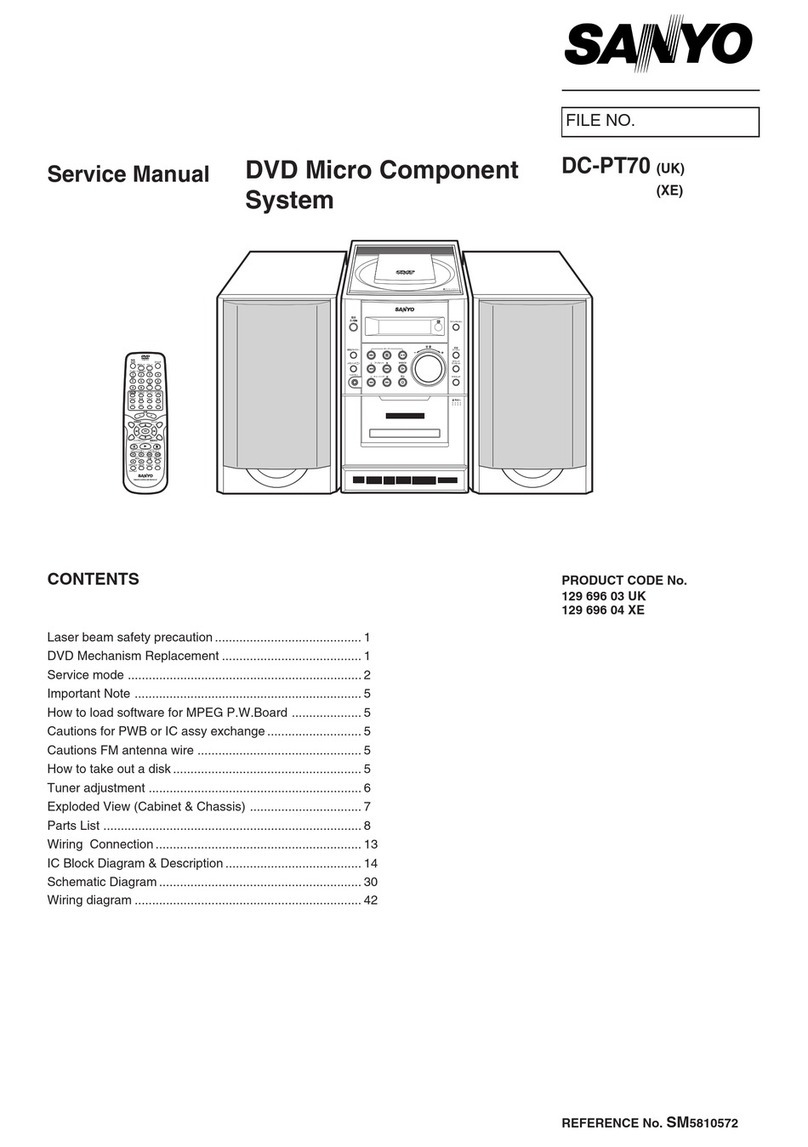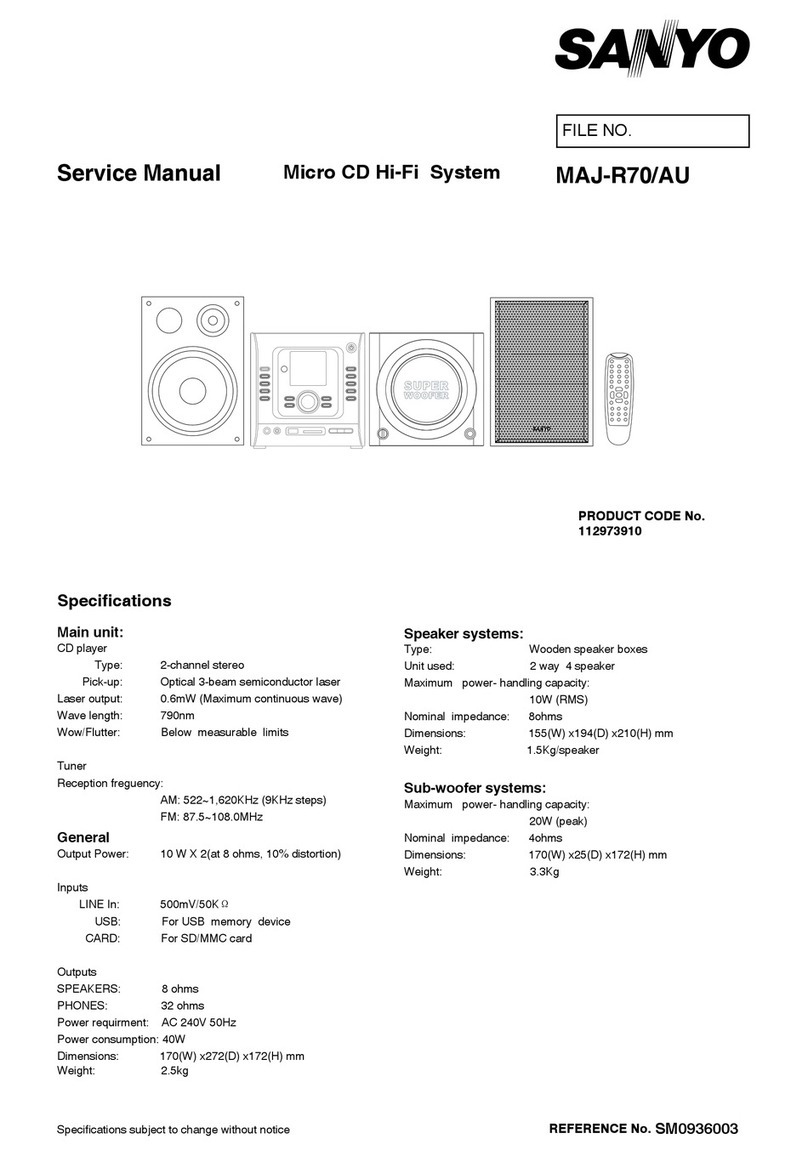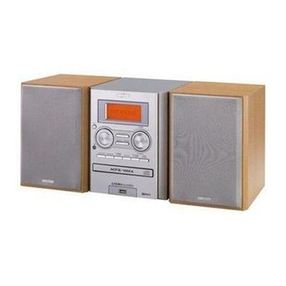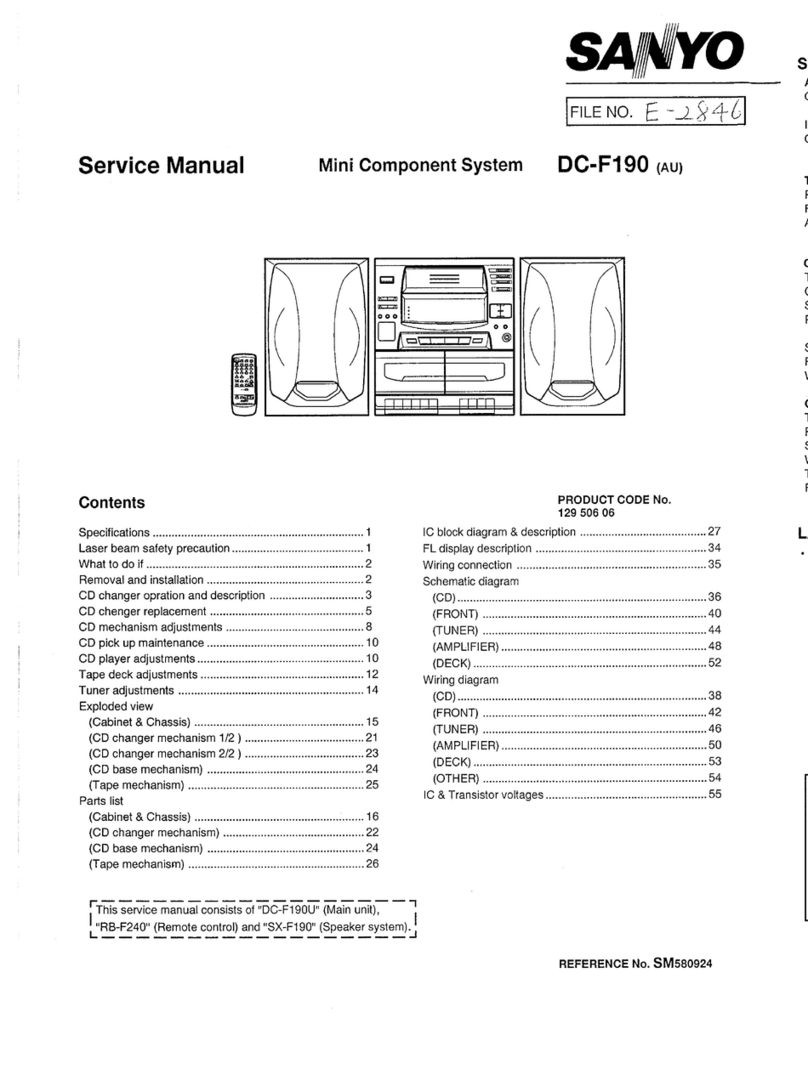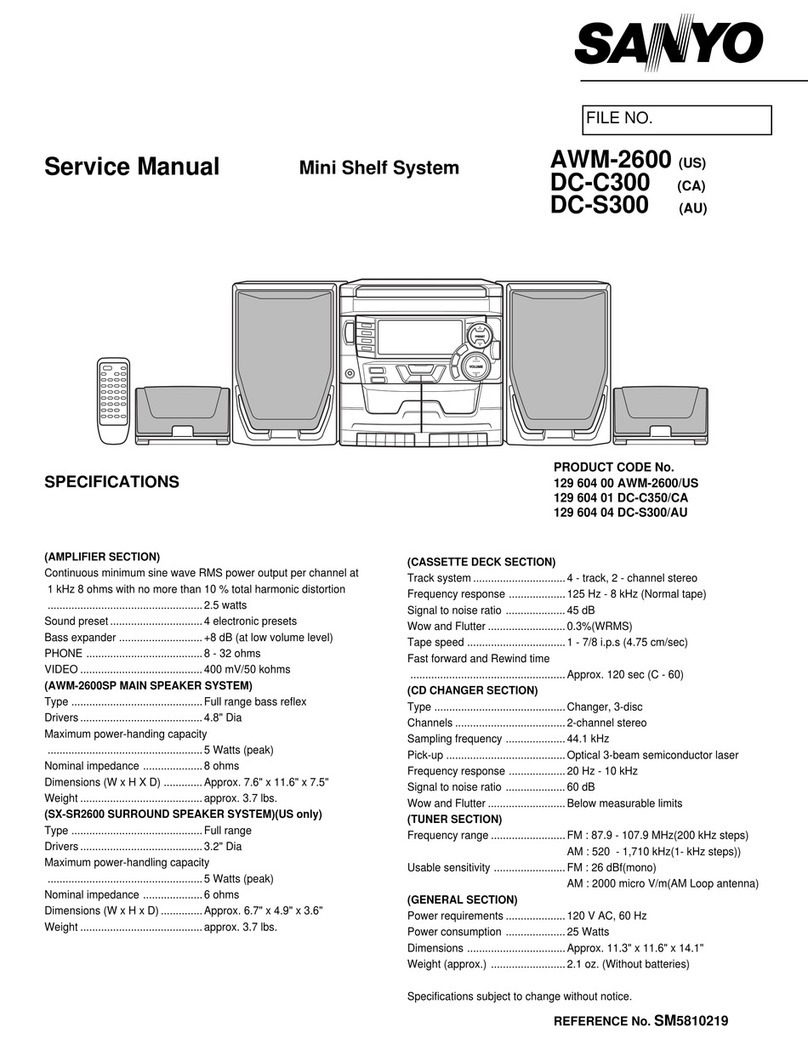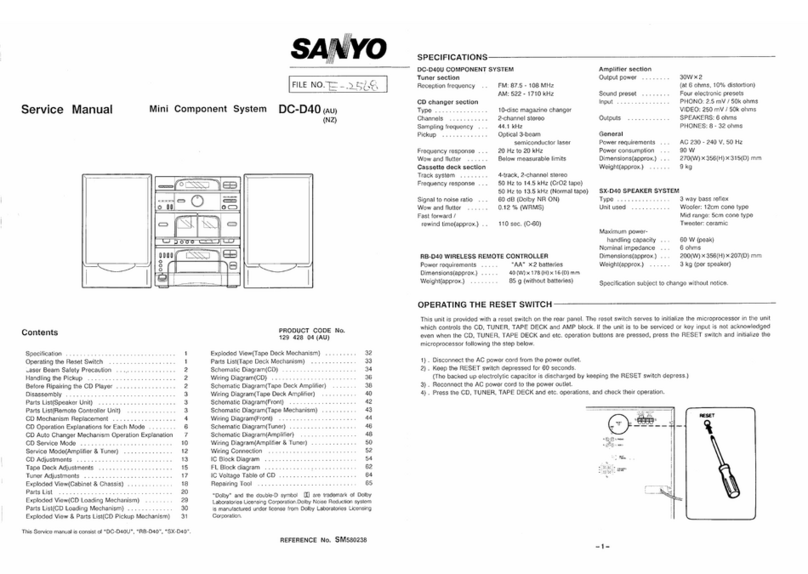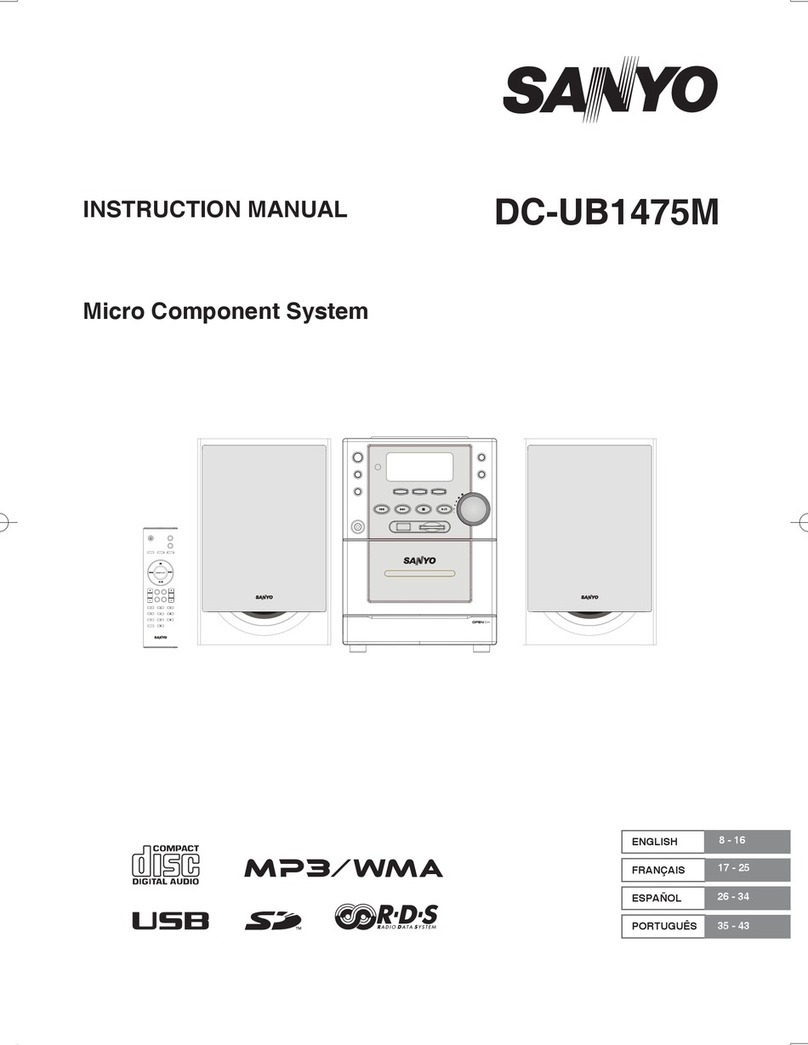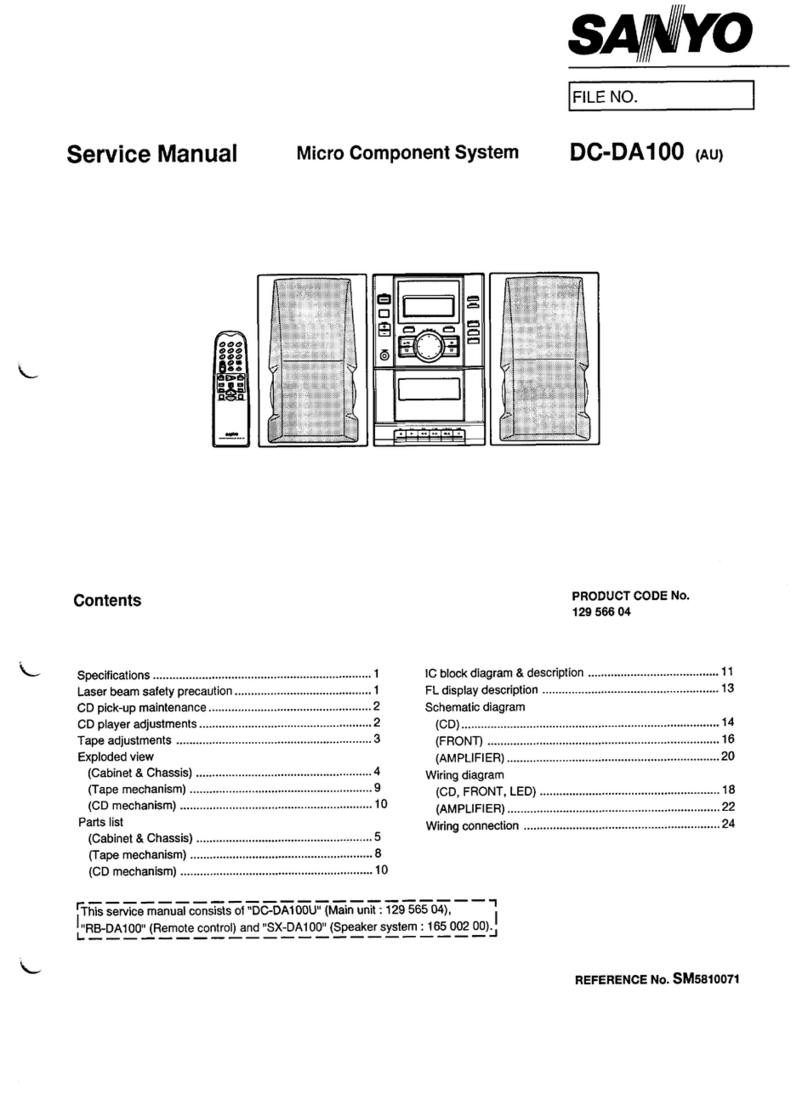“
BEFORE OPERATION
P:ess the POWER switch. Bass expander switch (BASSXPANDER)
To turn off the power, press it again. Press the switch to the ON position to enhance the bass sound.
Adjusting the volume WHAT TO DO IF ...
Move the VOLUME control upwards to increase volume or downwards to If the operation of the unit or display is not normal, turn off the POWER
decrease volume. switch. Then turn it on again and resume the operation.
Adjusting the Ief’flrighl speakef balance
Use the BALANCE control to adjust the lefVright speaker balance.
Adjusting the sound quality
The GRAPHIC EQUALIZER controls (300HZ1 kHz/1 OkHz) allow the
sound to be tailored to individual musical preferences or to fit the acous-
tics of the room. Moving the control will adjust the sound level in anarrow
range of musical frequencies.
CD PLAY
Use compact discs hearing the symbol shown below. In addition to
conventional 12 cm CDs, this system can be used to play 8cm CDs
without an adapter.
Lmisi!
DIGITALAUDIO
1. Press the CD function switch.
“no diSC” appears on the display.
2. Press the OPEN/CLOSE switch.
The disc tray slides out.
The display shows “OPEn”.
3. Place the disc with the label facing up on the disc tray.
E
al o
00
.
For 12 cm CD For 8cm CD
4. Press the OPEN/CLOSE switch again to close the disc tray.
The total number of tracks and total play time on the disc appear.
,VOTE:
5.
6.
If adisc is loaded upside down, or if no disc is loaded, “no diSC” will
appear on the display.
Press the “ ➤/11 “switch.
“PL4Y F“appears on the display and play starts from the first track.
The following information are displayed:
-The current track number.
-Elapsed time for the current track.
NOTES:
-If the” ➤/ii “switch is pressed after the disc has been placed in
the disc tray, the disc tray will close and play will start.
Ifyou wish to start play from adesired track, press the” ~/~“
switch until the desired track number is shown on the display .Then
press the “ ➤/II “switch.
Press the “ ■“switch to end disc play.
When the last track has been played, the player automatically stops.
The total number of tracks and total play time are displayed.
When the OPEN/CLOSE switch is pressed during play, play will stop
and the disc tray will slide out.
Notes on handlina com~act discs
Do not expose-the disc to direct sunlight, high humidity or high
temperatures for extended periods of time.
Discs should be returned to their cases after use.
Do not apply paper or write anything on the disc surface.
Handle the disc by its edge. Do not touch the playing surface (glossy
side).
Fingerprints and dust should be carefully wiped off the playing
surface of the disc with asoft cloth.
Wipe in astraight motion from the centre to the outside of the disc.
Never use chemicals such as record cleaning sprays, antistatic sprays
or fluids, benzine or thinner to clean compa-ct ‘discs.
Temporarily stopping play
Press the” ➤/II “switch. “PIAY F“blinks. To resume play, press the
switch again.
Skip play
To skip to track 6while track 3is playing, press the ~/Mswitch
repeatedly until “6” appears on the display.
To skip back to track 3while track 6is playing, press the~ /44 switch
repeatedly until “3” appears.
Search (forward/reverse)
If the w/~or ~/ 44 switch is pressed during play, the player will
search at high speed in the forward or reverse direction while the switch
is being pressed. When the switch is released, normal play will continue.
-While the “ ~/~“ or “ ~/~“switch is pressed, the sound
will be reduced in volume.
Introscan
Press the INTRO SCAN switch to play the first 10 seconds of each track.
“INTRO” appears on the display.
-Press the INTRO SCAN switch again to return to normal play.
-Ifthe INTRO SCAN switch is pressed during normal play, introscan will
start with the next track on the disc.
-press the “ ~/~“ or” W/~“switch to skip to another track
during introscan play.
Random play
Press the RANDOM PIAY switch to begin random play. The player will
automatically select and play tracks on the disc at random. “RANDOM”
appears on the display.
Ifthe RANDOM PMYswitch is pressed during random play, the player
will select the next random track.
Random Introscan play
Press the INTRO SCAN switch, then the RANDOM PIAY switch, to play
the first 10 seconds of each track at random.
Repeat play
Before or during play, press the REPEAT switch. The player will play all
the tracks, all the programmed tracks or all the random play tracks
repeatedly. ‘$~” appears on the display.
To cancel repeat play, press the REPEAT switch again. “~” goes out.
-4-


